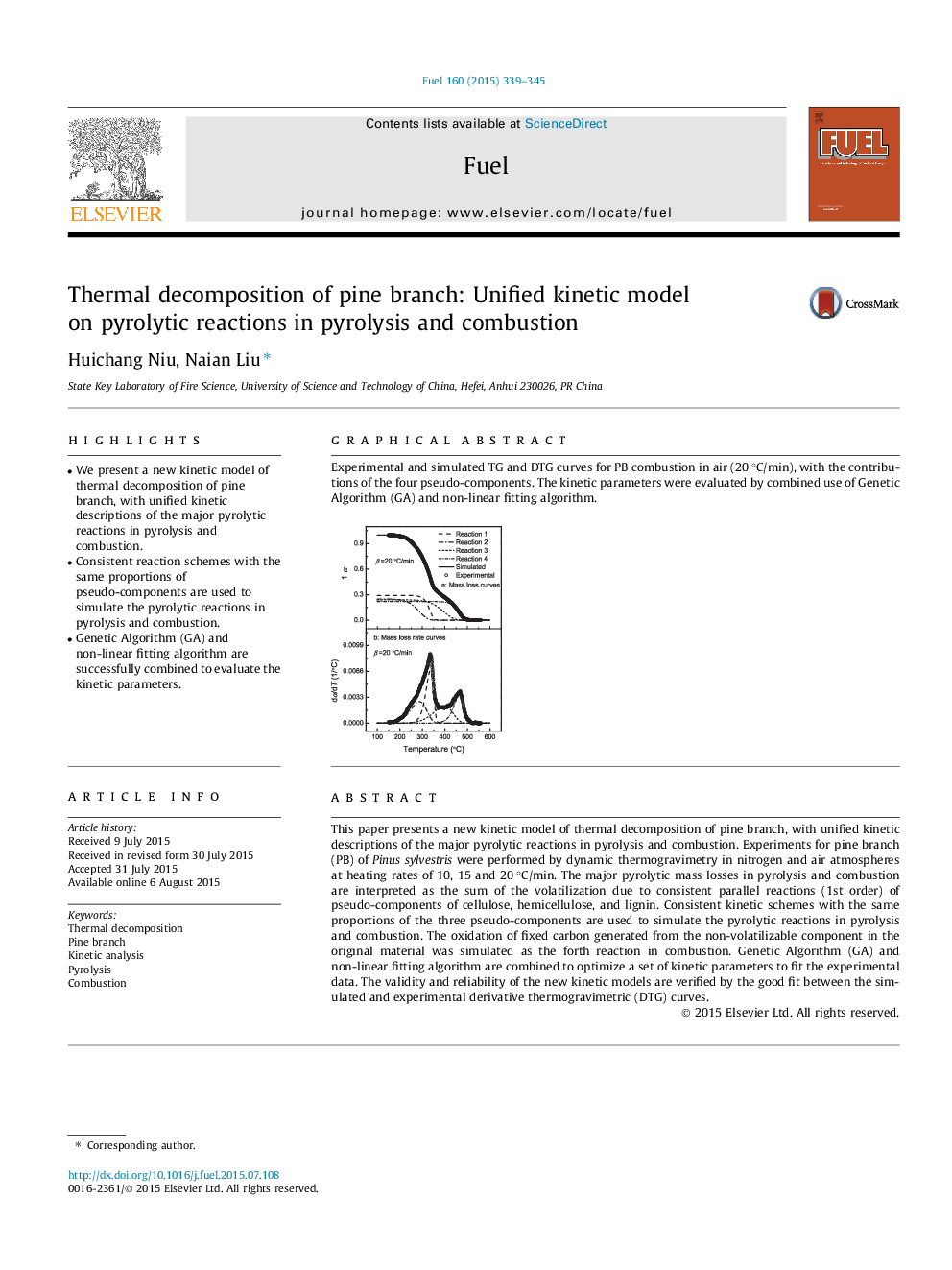| Article ID | Journal | Published Year | Pages | File Type |
|---|---|---|---|---|
| 205555 | Fuel | 2015 | 7 Pages |
•We present a new kinetic model of thermal decomposition of pine branch, with unified kinetic descriptions of the major pyrolytic reactions in pyrolysis and combustion.•Consistent reaction schemes with the same proportions of pseudo-components are used to simulate the pyrolytic reactions in pyrolysis and combustion.•Genetic Algorithm (GA) and non-linear fitting algorithm are successfully combined to evaluate the kinetic parameters.
This paper presents a new kinetic model of thermal decomposition of pine branch, with unified kinetic descriptions of the major pyrolytic reactions in pyrolysis and combustion. Experiments for pine branch (PB) of Pinus sylvestris were performed by dynamic thermogravimetry in nitrogen and air atmospheres at heating rates of 10, 15 and 20 °C/min. The major pyrolytic mass losses in pyrolysis and combustion are interpreted as the sum of the volatilization due to consistent parallel reactions (1st order) of pseudo-components of cellulose, hemicellulose, and lignin. Consistent kinetic schemes with the same proportions of the three pseudo-components are used to simulate the pyrolytic reactions in pyrolysis and combustion. The oxidation of fixed carbon generated from the non-volatilizable component in the original material was simulated as the forth reaction in combustion. Genetic Algorithm (GA) and non-linear fitting algorithm are combined to optimize a set of kinetic parameters to fit the experimental data. The validity and reliability of the new kinetic models are verified by the good fit between the simulated and experimental derivative thermogravimetric (DTG) curves.
Graphical abstractExperimental and simulated TG and DTG curves for PB combustion in air (20 °C/min), with the contributions of the four pseudo-components. The kinetic parameters were evaluated by combined use of Genetic Algorithm (GA) and non-linear fitting algorithm.Figure optionsDownload full-size imageDownload as PowerPoint slide
